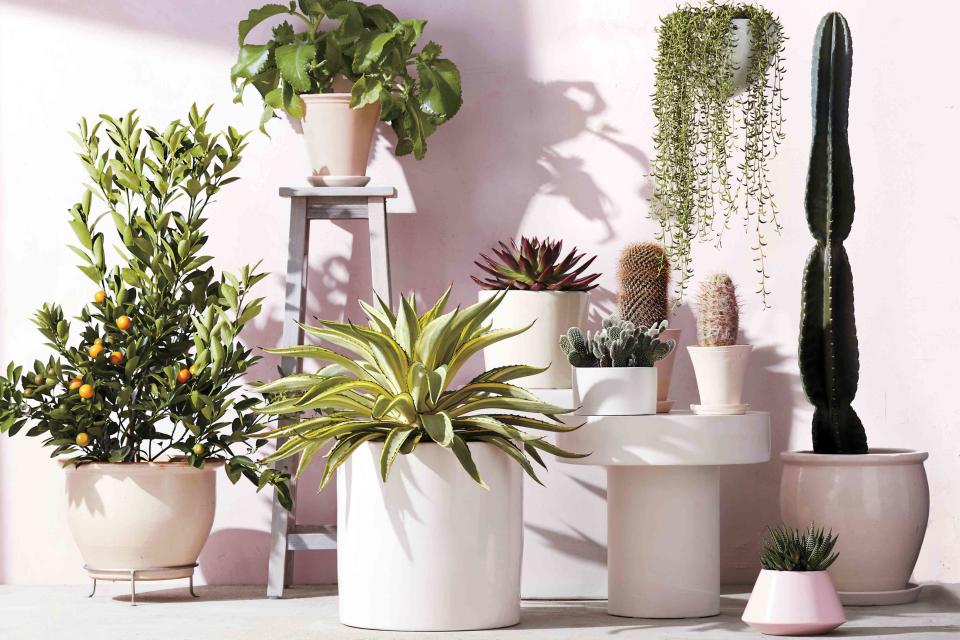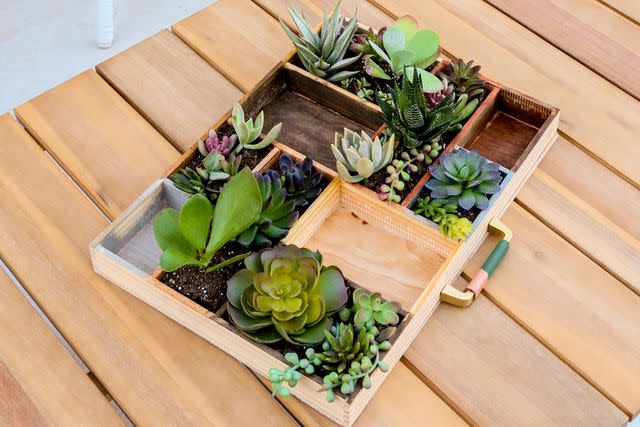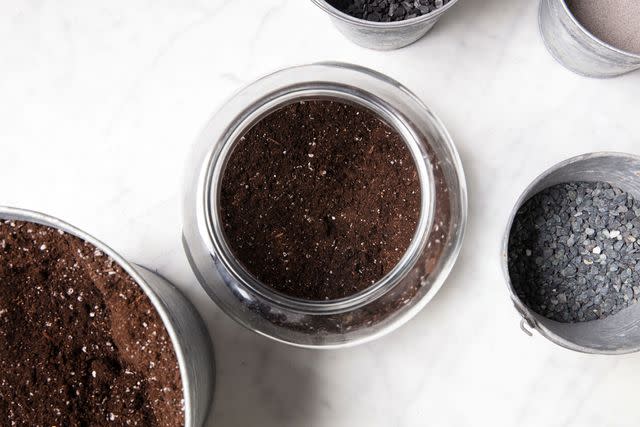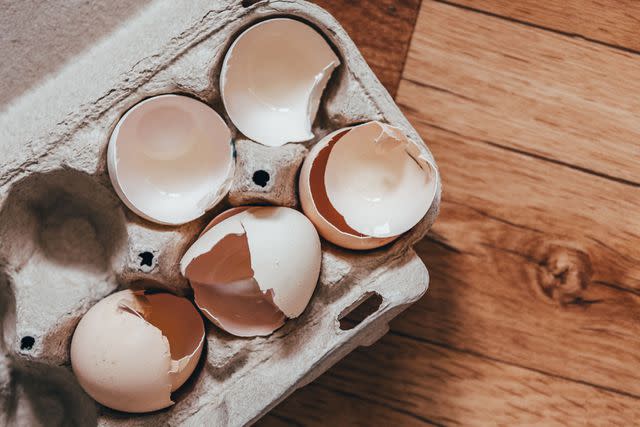11 Ways to Care for Your Indoor Plants More Sustainably
You may not realize it, but houseplants can come with a variety of sustainability issues. Here, we show you how to grow and care for them in a more eco-friendly way.

Kate Mathis
For many, caring for houseplants brings much-needed greenery and life to our indoor spaces. And when done right, plants can be the ultimate in eco-friendly décor. But as with anything else, it's important to consider the carbon footprint of your houseplant habit. From where your plants were raised to the soil and containers you house them in, indoor plants can come with an environmental cost. But there are ways to ensure that your indoor plants are Earth-friendly. We spoke with experts who gave us tips and tricks for growing your beloved indoor houseplants more sustainably.
Meet Our Expert
Justin Hancock, horticulturist for Costa Farms, a large-scale horticultural growing farm specializing in houseplants, tropical plants, and outdoor garden plants
Carly Hobbs, founder of My Green Toddler, a sustainable living blog
Kaustubh Deo, president of Blooma Tree Experts, a high-end residential tree care contractor in Seattle
Related: 23 Simple Ways to Live Every Day More Sustainably
Collect Rainwater
Set a bucket outside to collect rainwater, says Justin Hancock, horticulturist at Costa Farms. "If you can, collect rainwater to water your plants with instead of pulling it from a well or your municipality’s water system," he says. A good way to do this is to place buckets underneath your gutter downspouts. Make sure to place metal screen sheets over the tops of the buckets—this helps prevent leaves and other debris from collecting in the bucket with your water.
Use Plant Containers Made From Recycled Materials
When shopping for pretty flower pots, choose those made from recycled, sustainable materials where you can. This helps to reduce your dependency on plastic.
Repurpose Containers or Purchase Secondhand Pots

Kate Mathis
Another option? Repurpose existing containers you have at home (glass jars and even old drawers work well for this) or thrift secondhand flower pots. "Look for secondhand plant pots in thrift shops or on Facebook Marketplace," says Carly Hobbs, founder of My Green Toddler. "This reduces the demand for resources to make new pots and ensures the existing plant pots continue to be used instead of wasted."
Related: 15 Things You Should Always Buy at the Thrift Store, According to Design Insiders
Always Recycle Plastic Containers
If you do have plastic containers, be sure to recycle them appropriately. "Many garden centers, for example, have an area where you can drop off plastic pots/trays/etc. and they’ll be picked up for recycling by growers like Costa Farms," says Hancock. "While plastics often have a high input to create, many can be recycled."
Use Coir-Based Mix
Hancock suggests using a coir-based potting mix rather than a peat-based mix for your houseplants. "Coir is a byproduct (of a byproduct!) of the coconut industry," he says. "While peat is technically a renewable resource, it takes hundreds of years for a peat bog to regenerate."
Related: The Difference Between Potting Mix and Potting Soil—and When to Use Each
Create Your Own Peat-Free Mix

Martha Stewart
Or, if you're feeling enterprising, you could try your hand at making your own peat-free potting mix. At the most basic level, you'll need coir, perlite or builder's sand, and compost. But, this might not be the most sustainable option, warns Hancock. "If you use several different ingredients that originate in different places, it may not necessarily have a lower carbon footprint," he says.
Purchase Locally Grown Plants
When searching for new houseplants for your home, always try to buy locally grown plants. Locally grown plants mean they likely were not shipped to your local nursery, meaning less energy was used in transportation.
Propagate Plants for Free
Another option? Propagating your existing plants. "Use plant cuttings from friends or your existing plants to propagate new indoor plants," says Hobbs. "Devil's ivy and snake plants are super easy to propagate; just pop them in water and wait for roots to grow." Have lots of friends with pretty houseplants? Try hosting a plant swap with propagated cuttings for an easy way to bring new variety into your home without purchasing a brand-new plant.
Related: 3 Ways to Propagate a Snake Plant—an Easy-to-Grow Species That Thrives in Low Light
If Not Local, Consider Where Your Plants Were Grown
So you have your sights set on a plant that wasn't grown locally—what to do? Consider where it was grown and whether it needed to be in a greenhouse or not. "Houseplants grown in Miami, for example, aren’t typically grown in greenhouses—so while they may have more carbon associated with being shipped to your location, they were grown with a lot less energy than plants grown in the North where greenhouses have to be heated/cooled during the hottest and coldest months," says Hancock.
Use Food Waste to Support Your Houseplants

Olga Pankova / Getty Images
When caring for your houseplants, consider using your food waste as a fertilizer option. "You can re-use elements of your home food waste to support your plants," says Kaustubh Deo, president of Blooma Tree Experts. "A classic is to collect eggshells in a baggie—once you have enough, you can crush them or run them through a blender to create a fine powder for your plants. This powder is an excellent source of calcium."
Related: How to Make Homemade Fertilizer Using Common Kitchen and Garden Scraps
Compost Dead Houseplants
So you've lost a houseplant—now what? Don't toss it in the trash. "If you, unfortunately, lose a houseplant, composting it rather than throwing it in the trash, can help it break down rather than rot in a landfill and produce climate-altering methane gas," says Hancock.
Related: A Beginner's Guide to Composting, According to Experts
Read the original article on Martha Stewart.

